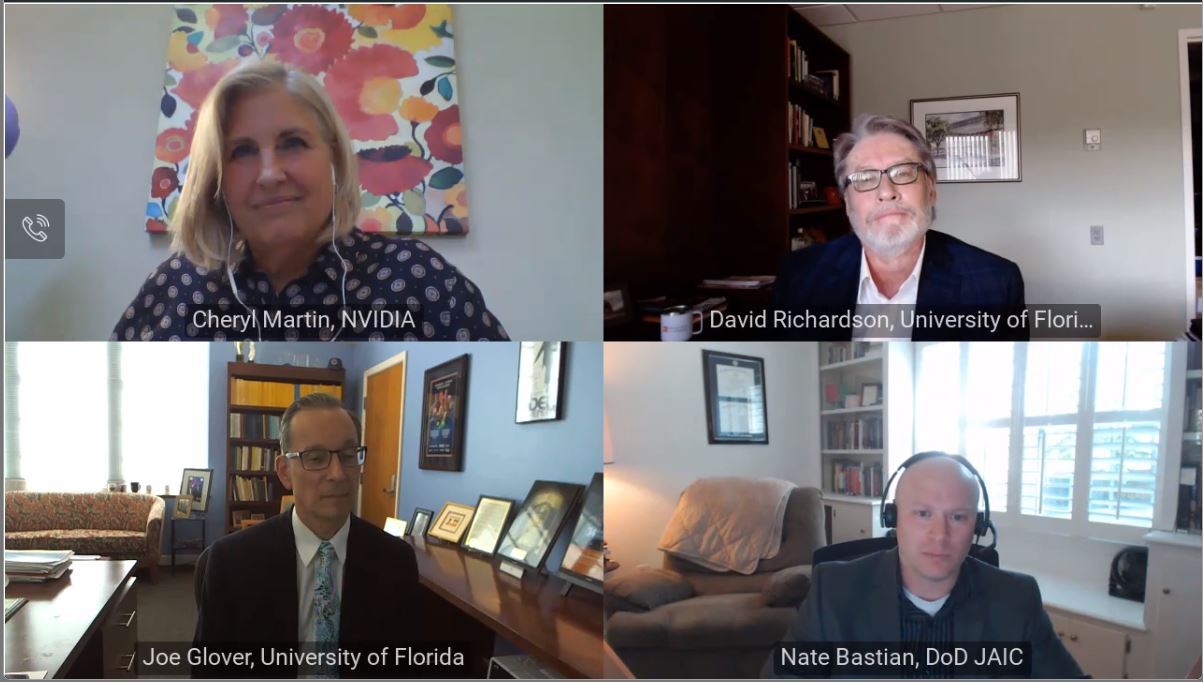Universities aren’t preparing the workforce for tomorrow — they’re preparing the workforce for today.
That message, and its underlying sense of urgency, came from a group of experts who took part, in last month’s GPU Technology Conference, in a panel titled “Realizing the Vision of an AI University.”
The educators and government leaders discussed the defining characteristics of an AI university — and outlined its opportunities and challenges — while describing the importance of having a path for universities to build a robust AI ecosystem.
Cheryl Martin, director of higher education and research at NVIDIA, moderated the panel, which included Joseph Glover, provost and senior vice president for Academic Affairs at the University of Florida; David E. Richardson, dean of the College of Liberal Arts and Sciences at the University of Florida; and Nathaniel D. Bastian, chief artificial intelligence architect for the Office of the Chief Technology Officer at the Joint Artificial Intelligence Center in the U.S. Department of Defense.
AI is entering all sectors of society and having a rapid and profound effect. An AI-first university approach involves teaching and making AI accessible to every student and faculty member across all majors and specialties. And it’s interdisciplinary — every student should graduate with at least some knowledge of AI, Bastian said.
“As universities, we’re preparing students and society to prosper. Every student, in every major, should have the opportunity to learn about AI and data science,” Glover said. “Whether it’s to acquire basic knowledge or true expertise, the intention is to be able to provide all students with that understanding.”
An AI university can encompass smart services, such as combining students’ datasets into recommendations that can guide their university experience. It also involves creating a strong research-to-marketplace pipeline for educators as well as addressing AI ethics and bias, Glover said.
Most importantly, departments and colleges need to work together, Bastian said. It can be as basic as starting an “AI for Everyone” course, getting all the disciplines to work together and understand this new technology. “Operations are often siloed, and they need situational awareness,” Bastian said.
Challenges in the path to realizing an AI university include funding, according to the panel. Universities need to be creative in building support through new channels, such as university donors and should include funding for new faculty talent acquisition.
As Richardson summarized it, with AI so much is possible. But he emphasized that the vision and execution needs commitment from the top levels of the university. It’s also critical to acquire the best talent, an area in which higher education institutions are in direct competition with industry.
“It’s not the technology that holds us back, it’s the sense that our faculty don’t necessarily know what the world holds for them and how easy it is to move into the world,” he said.
Students and educators can watch the full discussion on demand for the next 90 days here.
Additional resources:
